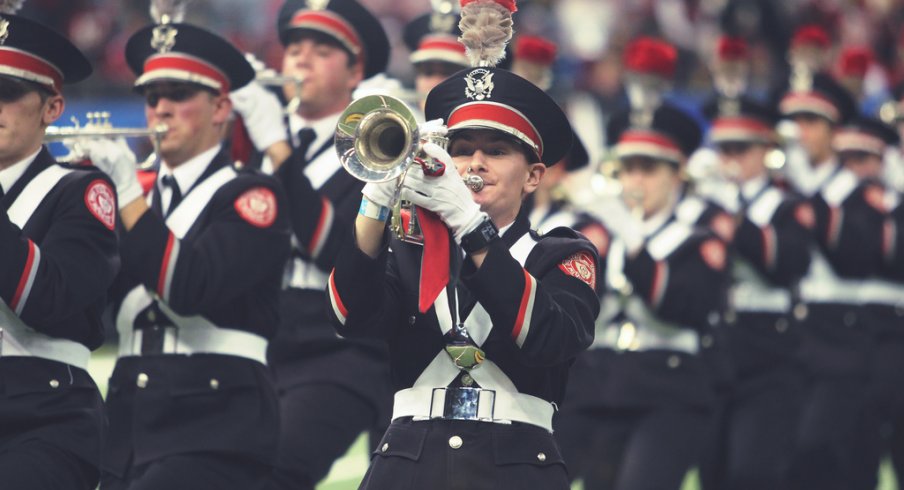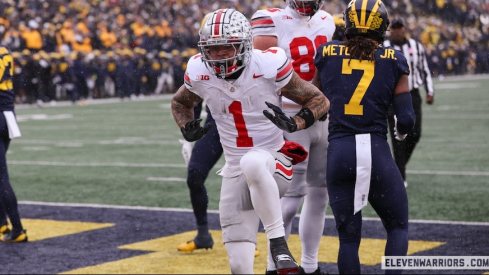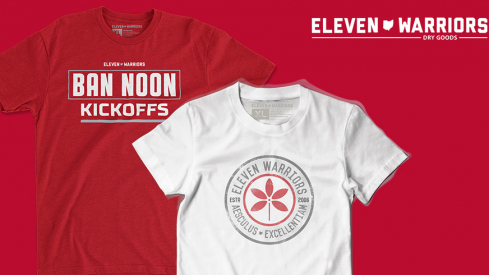We're not as stoic as we think we are.
In general, people like to think that they are above the influence of mass media and advertising and doe-eyed kids who just want a wowwypop. We like to think of ourselves as smarter than that, unswayed by the forces that tug at our heart and groin and brain strings. Sorry, Anheuser-Busch! I will not be duped into drinking your alcoholic urine brine just because a dog and a horse are pals during the Superbowl! I'm an intelligent 31 year old man, and your charms are useless against me!
Well, that's wrong. I'm dumb, you're dumb, we're all dumb. Or at least easily influenced.
My reasoning for this is the deadly combination of sports and music, and my evidence is roughly all of sports-related YouTube. But first, the reason this was brought to my attention was because Awful Announcing noted that a gigantic sports entity has found itself caught with its hand in the musical cookie jar, so to speak:
Last week, BMI filed a lawsuit seeking ESPN pay $15 million for a fee that covers incidental airing of music by the network. In its filing, BMI said:
“Advertisers place a premium on live sporting events … and ambient stadium music is a critical component of the broadcast that allows ESPN to attract viewers by making them feel like they are sitting in the stadium cheering on their favorite team.”
Oh ho ho! Correct! This is exactly what ESPN (and every other sports channel of every stripe) is trying to recreate for the viewer while watching games on The Network. Every bumper, interstitial, or inane pregame show clip of Jason Aldean dissecting the corpse of country music and feeding it into a musical woodchipper is ESPN's attempt to transport viewers to a place that can make a mid-season Big Ten game featuring two 2-5 teams seem like a battle for the very soul of mankind. And if you're watching it ironically, I guess that's kind of true, but with some careful editing and clever music choices, if you only watch the 5 second highlight after a touchdown and before a commercial break, you'd think you were watching something halfway entertaining.
And, as Awful Announcing points out, ESPN was looking for a way to have the rights to even more music by means of a blanket agreement for BMI's music "that would cover BMI’s extensive music library, a catalog that has 10.5 million published songs." The thing is, we've become so accustomed to popular music matching up with sports that we demand it now, and it's startling at how effective it is at getting us to pay attention to decidedly low-rent content.
I can understand some skepticism on your part. You, a thinking human being, know enough to turn the channel after the fifth turnover in an increasingly stupid game involving teams you could not care less about. But you won't. The package being shown to you is just too damn slick.
And I blame YouTube for this.
Because YouTube is so ubiquitous at this point, it's easy to forget that at one time it was just straight, unmitigated garbage, especially where sports highlights were concerned. Low quality videos coupled with awkward video encoder stamps were pretty much the norm from 2006 through 2010, but as it turned out, none of that mattered at all, because dammit I wanted to watch Beanie Wells stiff arm dudes fifty feet into the Earth's crust. And while that by itself is fairly appealing and fun, it's way more appealing and fun when set to the dulcet tones of "Momma Said Knock You Out" by LL Cool J.
To be fair, sometimes the highlights are the main motivator. Ignoring the weird, kind of racist subtext, there's no way in hell I would ever willingly listen to Spiderbait's godawful cover of "Black Betty" as many times as I did without some pretty sick Ted Ginn highlights playing over it. To be even more fair, the weird metagame of seeing just how many sports clips YouTubers could set to "Boom" by P.O.D. convinces me that maybe people actually enjoy trash songs when it's paired with football.
But let's try a little experiment. On one hand, I have a Todd Boeckman highlight. It's a nice clip; him chucking up a touchdown against Michigan in his last home game as a Buckeye after a season that saw him get supplanted by Terrelle Pryor. But let's see how much we can improve it (just hit play on both videos, or if you're on mobile, click here):
| YouTube Doubler |
Chills.
And it works because even if we didn't know it, we needed Todd Boeckman's moment of triumph to be set to the score from The Big Green, just the same way that we need to watch Ezekiel Elliott highlights backed by whatever appears at the top of some random dude's iTunes list, and just like how we need to see a musical version of the highlight we just saw, but this time through a cool video filter and accompanied by a song selected by an ESPN producer based on market research about the target audience that particular game is being broadcast to. We live our lives set to a soundtrack of our own choosing, and it makes sense that we'd demand the same of the sports that we consume.
Truthfully, I'm not sure if it's a bad thing that we're so easily swayed by the combination of music and sports. Highlight reels on YouTube are generally bad, but in a charming, "my 12 year old son just showed me how to edit video" kind of way. ESPN, on the other hand, peddles in cheap emotion and the broest of country-rap that might appeal to some but infuriate others. The B1G sometimes gets it right, but it also requires a lot of work on the part of the animation department.
As for me, I'm still trying to keep things simple. Sometimes I try to put the internet and cable aside and just enjoy a song sung with friends, and that's enough for me.


